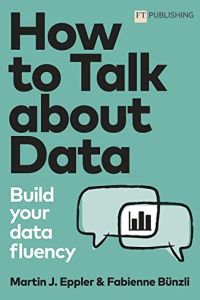
Book
How to Talk About Data
Build Your Data Fluency
FT Publishing,
2022
plus...
FT Publishing © 2022
This authorized summary of HOW TO TALK ABOUT DATA is published by arrangement with Pearson Education Limited.
ISBN: 9781292421193
Pages: 272
This authorized summary of HOW TO TALK ABOUT DATA is published by arrangement with Pearson Education Limited.
ISBN: 9781292421193
Pages: 272
We currently cannot offer you an audio version of this summary.
Recommendation
If you want to do well in business, in medicine and in life, you need to be able to analyze data. Every day, data become increasingly important in dealing with the world, and using data incorrectly generates negative consequences. Academics Martin J. Eppler and Fabienne Bünzli demonstrate that people can learn “data fluency” – even those with moderate computer skills can learn to competently analyze and communicate about data. Data fluency will improve your decision-making, in business and in daily life.
Summary
About the Authors
Chair of communications management at the School of Management Martin J. Eppler is vice rector of the University of St. Gallen, where Fabienne Bünzli is a lecturer.


















Comment on this summary